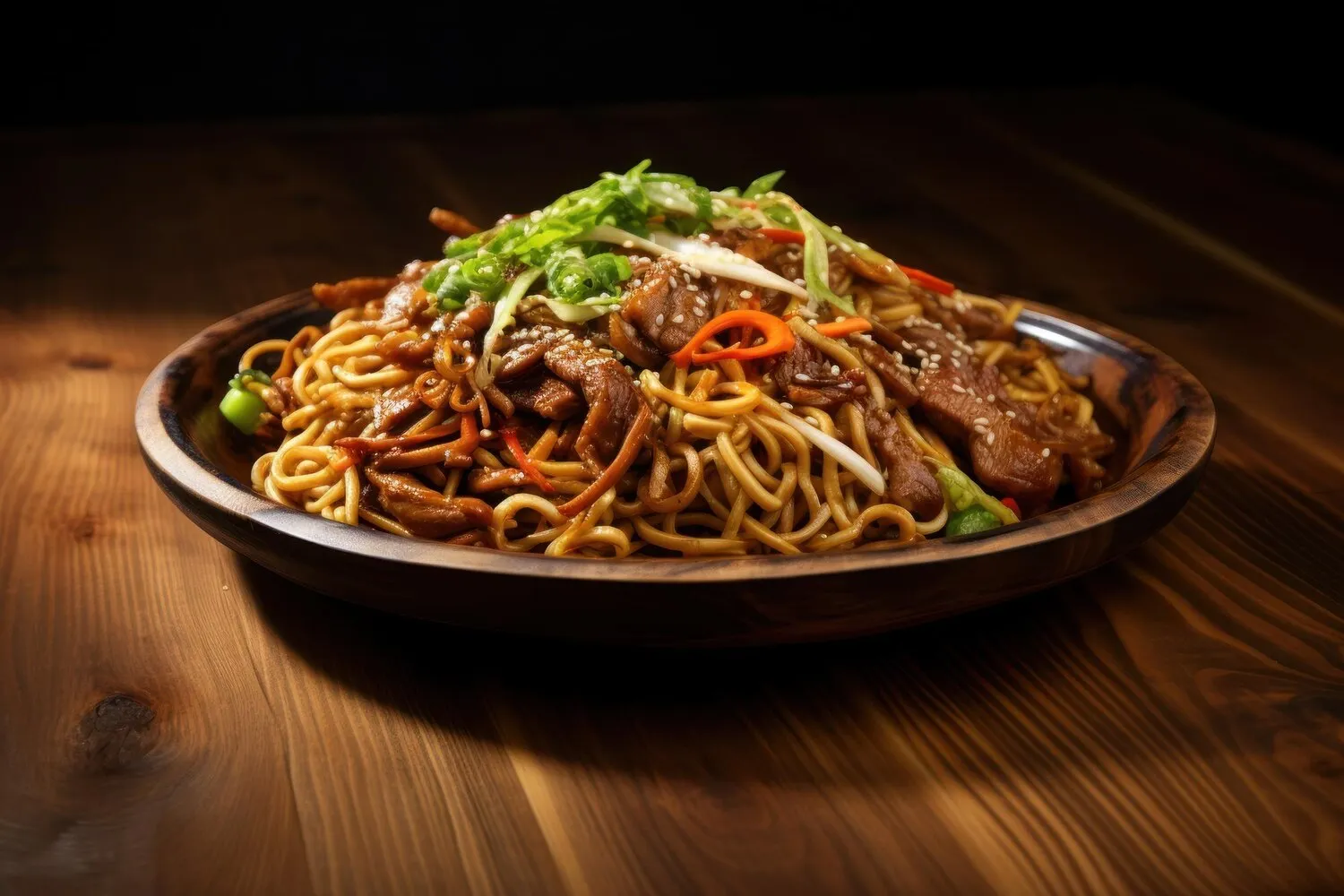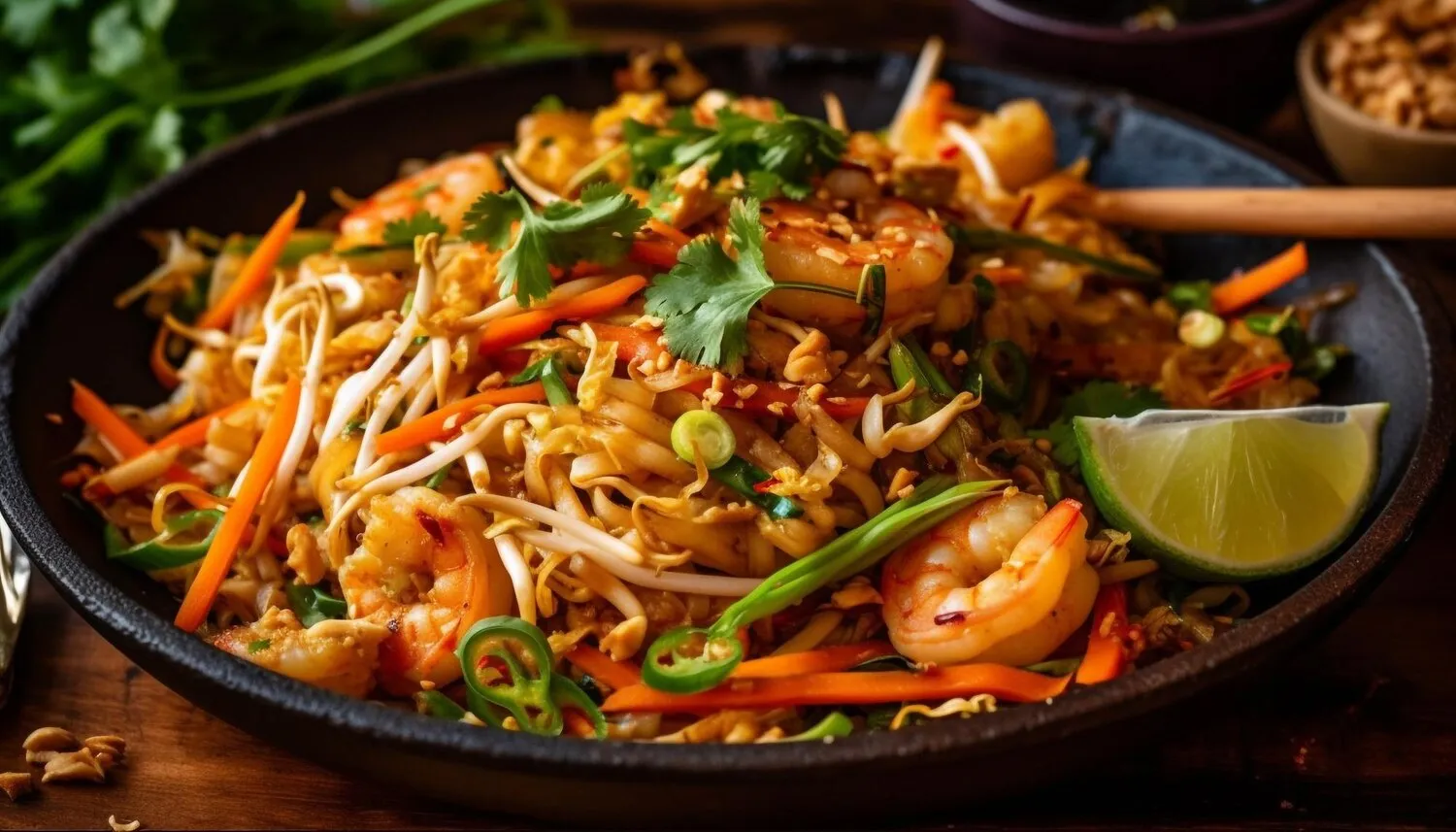
Yakisoba
Stir-fried noodles with vegetables and meat (usually beef, chicken, or pork).
Nutrition Facts
* The % Daily Value (DV) tells you how much a nutrient in a serving of food contributes to a daily diet. 2,000 calories a day is used for general nutrition advice.
Hot Tiger
Yakisoba emerged in the early 20th century, drawing inspiration from Chinese stir-fried noodle dishes but adapted to Japanese tastes and available ingredients. It gained popularity as a quick and affordable meal, particularly in post-war Japan.
Yakisoba is deeply embedded in Japanese food culture, particularly as a casual and affordable meal often enjoyed at festivals, street stalls, and family gatherings.
Festival Food
Yakisoba is a staple at Japanese festivals (matsuri), served hot off the griddle from street vendor stalls. The aroma of yakisoba cooking over a large teppan grill is synonymous with the festive atmosphere.
Okonomiyaki Integration
In some regions, particularly Hiroshima, yakisoba is a key ingredient in Okonomiyaki, a savory pancake. Layers of yakisoba noodles are incorporated into the okonomiyaki, adding texture and flavor.
Everyday Meal
Beyond festivals, yakisoba is a popular everyday meal, often prepared at home due to its simplicity and versatility. It's a convenient way to use up leftover vegetables and meat.
Yakisoba boasts a savory and slightly sweet flavor profile, driven by the yakisoba sauce and the interplay of stir-fried vegetables and meat.
The dominant flavor is umami-rich, stemming from the yakisoba sauce, which typically includes Worcestershire sauce, soy sauce, ketchup, oyster sauce, and various spices. The sauce coats the noodles, vegetables (like cabbage, carrots, and onions), and meat (usually pork, chicken, or beef), creating a cohesive and satisfying taste. Ginger and seaweed flakes (aonori) are often sprinkled on top, adding further depth and complexity. Some variations incorporate seafood like shrimp or squid.
Noodle Selection
Use pre-cooked yakisoba noodles specifically designed for stir-frying. These noodles are typically thicker and hold their shape well during cooking. Fresh ramen-style noodles can also work, but may require parboiling.
Sauce is Key
The yakisoba sauce is crucial. Pre-made yakisoba sauce is readily available, but homemade sauce allows for customization. Experiment with different ratios of Worcestershire sauce, soy sauce, oyster sauce, ketchup, and spices to achieve your desired flavor profile.
High Heat Cooking
Cook yakisoba over high heat in a wok or large frying pan. This ensures the ingredients are properly stir-fried and develop a slight char, adding depth of flavor.
Don't Overcrowd the Pan
Cook in batches if necessary to avoid overcrowding the pan, which can lower the temperature and result in steamed rather than stir-fried ingredients. This is particularly important for the meat and vegetables.
Explore additional Noodle dish dishes and restaurants
Explore Noodle dishDiscover top dining spots and culinary experiences in São Carlos.
Explore São CarlosLearn more about the food culture, restaurant scene, and culinary heritage of Brazil.
Explore Brazil
